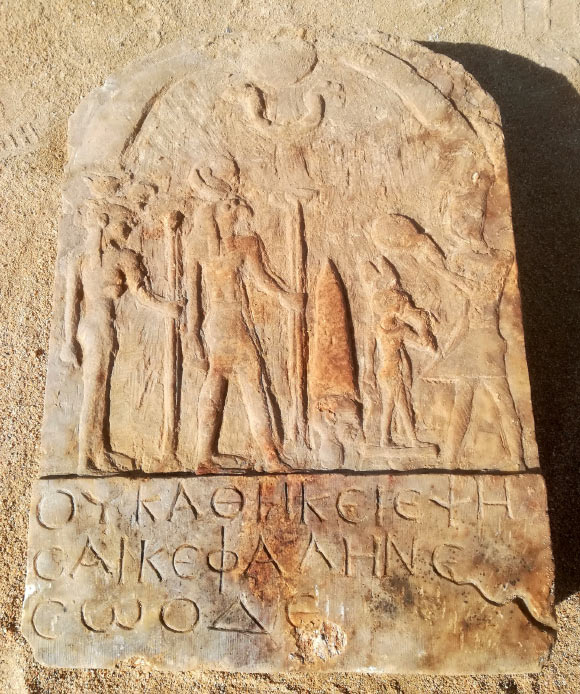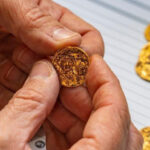During excavations at the ancient Hellenistic-Roman port of Berenike on the Red Sea coast of Egypt, an international team of archaeologists has documented a religious space from the Late Roman period associated with a falcon cult.
Stele with the scene of the falcon god and an inscription in Greek reading: ‘It is improper to boil a head in here.’ Image credit: Berenike Project / Sikait Project.
Founded by Ptolemy II Philadelphus in the second quarter of the 3rd century BCE on the Red Sea coast of Egypt, the Ptolemaic-Roman harbor of Berenike owed its existence to international trade, and its archaeological remains reflect the wide connectivity of its inhabitants.
Prior to its abandonment sometime before the mid 6th century CE, the port was inhabited in part by the semi-nomadic Blemmyes, whose origins lay in the Nubian region.
One of the main areas excavated during the past few archaeological seasons at Berenike is the Northern Complex, which lies in the northeastern corner of the site and was identified during several geomagnetic surveys conducted in the area. It consists of a large structure consisting of several buildings.
The presence of coral heads on its surface — typical of Late Roman building practices at Berenike — suggested a late date for the last period of occupation of the complex.
Excavations in and around the Northern Complex began in 2015, and by the end of the 2019 season there was a total of seven trenches, including those that revealed the Falcon Shrine.
This small temple for an Egyptian cult was adapted, in its latest phase, by the Blemmyan population to their own system of beliefs.
“The findings are particularly remarkable and include offerings such as harpoons, cube-shaped statues, and a stele with indications related to religious activities,” said Dr. Joan Oller Guzmán, an archaeologist in the Department of Antiquity and Middle Age Studies at the Universitat Autònoma de Barcelona.
“The most remarkable consecrated element found was the arrangement of up to 15 falcons within the shrine, most of them headless.”
“Although burials of falcons for religious purposes had already been observed in the Nile Valley, as had the worshipping of individual birds of this species, this is the first time we discovered falcons buried within a temple, and accompanied by eggs, something completely unprecedented.”
“In other sites, archaeologists had found mummified headless falcons, but always only individual specimens, never in group as in the case of Berenike.”
“The stele contains a curious inscription: ‘It is improper to boil a head in here,’ which far from being a dedication or sign of gratitude as normally corresponds to an inscription, is a message forbidding all those who enter from boiling the heads of the animals inside the temple, considered to be a profane activity.”
“All of these elements point to intense ritual activities combining Egyptian traditions with contributions from the Blemmyes, sustained by a theological base possibly related to the worshipping of the god Khonsu.”
“The discoveries expand our knowledge of these semi-nomad people, the Blemmyes, living in the Eastern desert during the decline of the Roman Empire.”
The team’s paper was published in the American Journal of Archeology.
_____
Joan Oller Guzmán et al. 2022. A Falcon Shrine at the Port of Berenike (Red Sea Coast, Egypt). American Journal of Archaeology 126 (4); doi: 10.1086/720806




